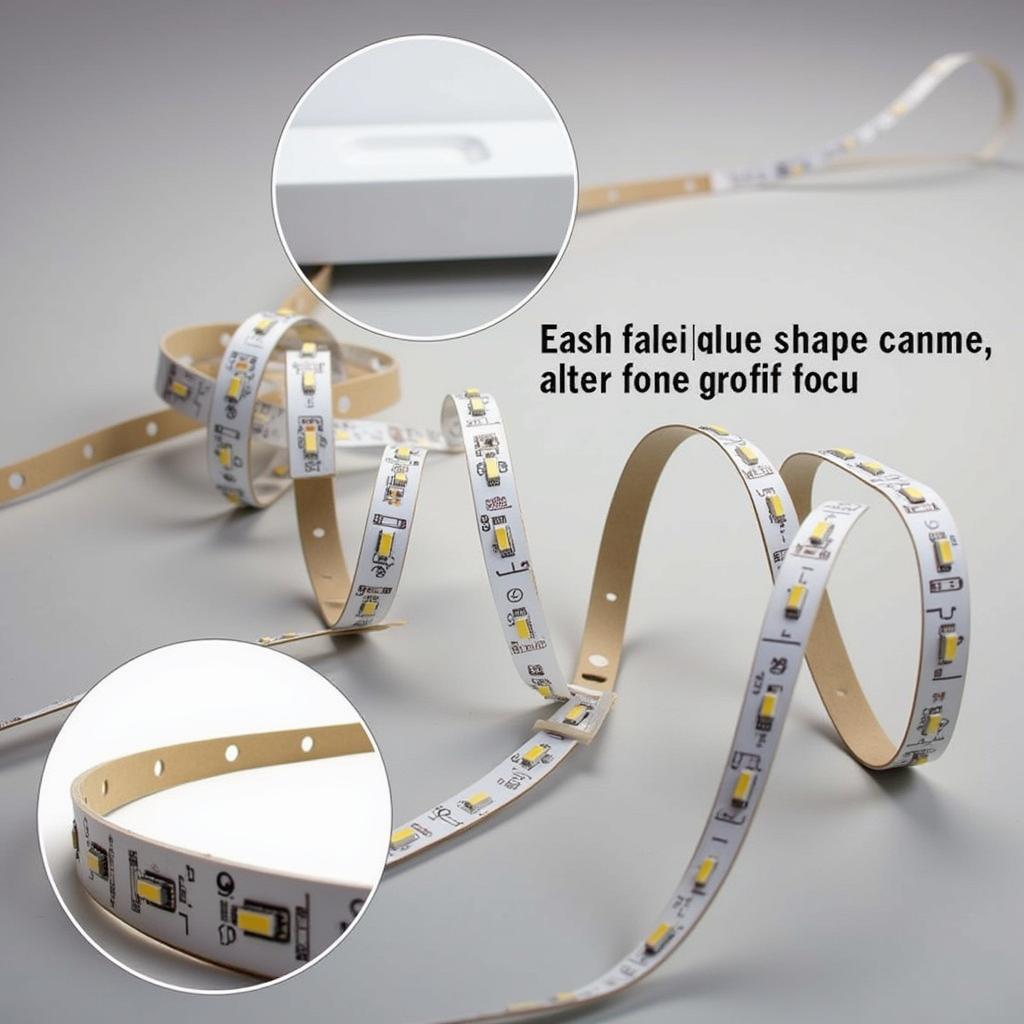High Density LED Strip Lights: The Ultimate Guide to Brilliant Illumination
October 14, 2024High Density Led Strip Lights offer a potent combination of brightness and control, making them ideal for a wide range of applications. Whether you’re looking to highlight architectural features, create stunning ambient lighting, or simply brighten up your living space, these powerful lights can deliver exceptional results.
Understanding High Density LED Strip Lights
High density LED strip lights are characterized by a higher concentration of LEDs per meter compared to standard LED strips. This denser LED packing results in more lumens per foot, translating to brighter and more even illumination.
Benefits of High Density LED Strips
Increased Brightness: The primary advantage of high density LED strips is their exceptional brightness. They produce a more intense light output, making them suitable for spaces that require powerful illumination or accent lighting.
Improved Color Consistency: With more LEDs packed closely together, high density strips minimize color variations between individual LEDs, resulting in a smoother and more consistent light output.
Enhanced Flexibility: Despite their high LED density, these strips retain a good degree of flexibility, allowing them to be installed on curved surfaces or in tight spaces.
 High Density LED Strip Flexibility
High Density LED Strip Flexibility
Choosing the Right High Density LED Strip
LED Chip Type: The type of LED chip used significantly impacts the light quality and color rendering. SMD 2835 and SMD 5050 are popular choices, offering good brightness and efficiency. For higher-end applications, SMD 2110 and COB (Chip on Board) LEDs provide even better color accuracy and light output.
LED Density: Measured in LEDs per meter, density directly influences brightness. Common options include 60 LEDs/m, 120 LEDs/m, and 240 LEDs/m. Higher density translates to brighter output but also increased power consumption.
Color Temperature: Select a color temperature that suits the intended ambiance. Warm white (2700K-3200K) creates a cozy and inviting atmosphere, while cool white (4000K-5000K) is ideal for task lighting or modern spaces.
Applications of High Density LED Strip Lights
Architectural Lighting: High density LED strips are perfect for accentuating architectural details, highlighting building facades, or creating dramatic lighting effects in commercial spaces.
Retail Displays: Their powerful illumination and excellent color rendering make them ideal for showcasing products in retail environments, attracting attention and enhancing visual appeal.
Home Lighting: From under-cabinet lighting in kitchens to cove lighting in living rooms, high density LED strips can transform the ambiance of any home. Their versatility and ease of installation make them suitable for various applications.
Installation and Power Considerations
Power Supply: Due to their higher LED count, high density strips require more power than standard LED strips. Choose a power supply with sufficient wattage to power the entire strip length.
Connectors and Wiring: Ensure proper connections and use appropriate gauge wiring to handle the current load.
Dimming Controls: For greater control over brightness, consider using a compatible dimmer switch.
Conclusion
High density LED strip lights offer a compelling combination of brightness, flexibility, and energy efficiency. Whether you’re looking to enhance your home’s ambiance, elevate a commercial space, or create stunning visual effects, these powerful lights provide a versatile and customizable solution.